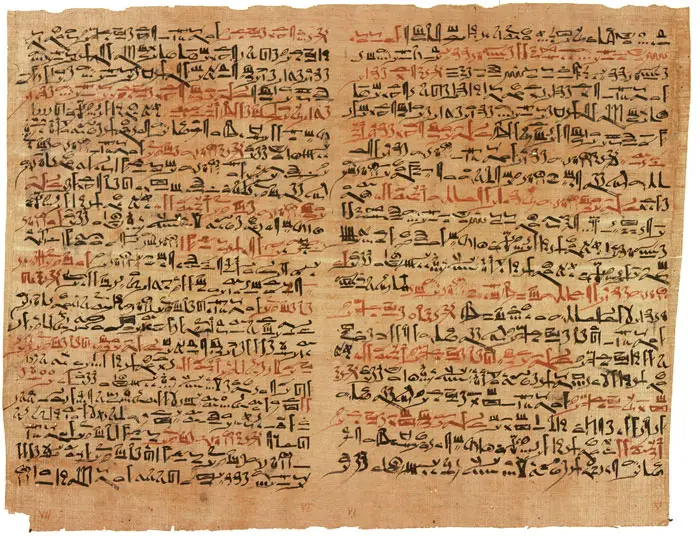The Hyksos People of Ancient Egypt
The word "hyksos" comes from heka khasewet, which means "foreign rulers", and was used by the Egyptians to describe the kings of nearby areas. Due to instability and famine in areas surrounding Egypt, the Hyksos invaded Egypt during the second intermediate period, around 1700 B.C. They formed the 15th Dynasty and ruled Lower Egypt for just over one hundred years.
'Hyksos' was the collective name given to the Asiatics who invaded Egypt. They took advantage of a time when Egypt was politically weak and their military could not stand up to the Hyksos’ more advanced weaponry.
Although at first this invasion must have been seen as unfortunate to Egyptians, by the time their rule ended, the Hyksos had introduced many technologies that would greatly benefit Egypt into the future.
Who were the Hyksos?
Although it’s unclear exactly where the Hyksos originated, they were a Semitic people also known as Amorites and sometimes called “Shepherd Kings”. Their names reflected a western-Semitic origin, and they were more than likely associated with the Hebrews. Amorites refers to people who lived in Syria and southern Turkey.
After attacking and defeating the parts of Syria that were already under Egyptian control, they proceeded to attack Egypt. The Hyksos never gained complete control of Egypt, only Lower Egypt, which covered the mouth of the Nile. They ruled from their capital city, Avaris.

© Jeff Dahl, MinisterForBadTimes - Map of Lower Egypt, showing Avaris
The Hyksos Invasion
The Hyksos were able to attack Egypt successfully because of their skills in using bronze weapons, composite bows and the use of the horse and chariot during the invasion. Although the Egyptians depict a barbarian-type overthrow, the truth is the seizure was likely a relatively peaceful one.
Famine naturally drove the Hyksos to Egypt where they slowly and gradually infiltrated Egyptian society. The evidence shows that the Hyksos left Egypt mostly unchanged in terms of deities, governing styles and traditions.

© NebMaatRa - Hyksos Entering Egypt
Hyksos Rule in Egypt
According to the ancient Egyptian historian, Manetho, the Hyksos maintained rule of Lower Egypt for 198 years and 10 months. Salatis was the first “Shepherd King” to rule. Meaning “Powerful King” in Sultan, Salatis controlled the land in the Nile Delta and Lower Egypt.
The rulers in Upper Egypt maintained control of their cities but acknowledged Salatis’ power by paying the ruler an annual tribute which assured their continual independence.
Succeeding Salitis, Lower Egypt was ruled by the Hyksos Kings Beon, Apachnas, Apophis, Jannas and Asses.

© Ashley Van Haeften - Scarab inscribed with
the name of a Hyksos King
Hyksos Inventions and Technical Improvements
The Hyksos were impressive builders and artisans. One of the most important technological improvements that they brought to Egypt was the shadoof. The shadoof revolutionized the techniques Egyptians used for farming. It was a wooden tool made up of a pole with a wooden bucket on one end, and a weight on the other.
Using the shadoof, ancient Egyptians were able to raise water above the level of the Nile River and to divert the water into canals. This eventually led to the ability for the ancient Egyptians to produce two crops a year instead of just one.

© Carsten ten Brink - Shadoof in Egypt
Another great improvement the Hyksos introduced into ancient Egyptian life were ships that integrated a keel. Keels are flat blades that make a ship more seaworthy by making them more stable. By creating more stable boats, the ancient Egyptians were able to increase trade with the Mediterranean Islands which, in turn, boosted Egypt’s economy.
Perhaps one of the greatest contributions the Hyksos made to the Egyptian culture was the active preservation of their documents. Apophis, the fifth Hyksos king, demanded that scribes recopy Egyptian texts to preserve them. He was responsible for preserving many documents including the Edwin Smith Surgical Papyrus, the Westcar Papyrus and the Rhind Mathematical Papyrus.

© Jeff Dahl - Fragment of the Edwin-Smith Papyrus
Other inventions and improvements included:
- The scimitar (a short sword that has a curved blade) – allowing improvements in the military
- Horse and chariot – allowing improvements in the military
- Bronze weaponry
- Introduction of new fruits and vegetables
- Introduction of the hump-backed Zebra cattle
- Improvements in potter’s wheels and the vertical loom
- Superior military techniques
The Ousting of the Hyksos

© Ashley Van Haeften - Scarab of Ahmose I
During the time period when the Hyksos ruled Lower Egypt, Egypt saw many Egyptian kings that ruled Upper Egypt, but they also saw a time of peace and prosperity. The same things that allowed the Hyksos to take over Egypt, also allowed the Egyptians to expel them from Egypt.
The introduction of improved military weapons and techniques was eventually used against the Hyksos. During the “wars of liberation”, between 1570-1550 B.C., Kamose and Ahmose (brothers) fought the Hyksos. Ahmose I, the first Pharaoh of the 18th Dynasty, completed the expulsion of the Hyksos from Egypt and unified both Upper and Lower Egypt to start the New Kingdom.
Hyksos Facts
- The Hyksos rulers never reached southern Egypt. Thebes, Abydos and Thinis remained untouched by Hyksos rule.
- The Hyksos kings assimilated themselves into Egyptian culture, making them exceptional rulers as they allowed the ancient Egyptians to maintain their lifestyle previous to invasion.
- The Hyksos were merchants, sailors, craftsmen, doctors, artisans, wine makers, etc. They introduced all of their skills to Egyptian culture including grain and beer and semi-precious stones.
- It is believed that the Hyksos were not of just one ethnicity, but a blend of many.
- From their capital city, Avaris, the Hyksos kings developed alliances with Crete, Cyprus and Anatolia.
- The Hyksos worshiped Seth, an Egyptian god that some believe is evil and some do not.
- Although the ancient Egyptians used hieroglyphs for their language, it appears that the Hyksos had no such language, only scroll work and designs.
